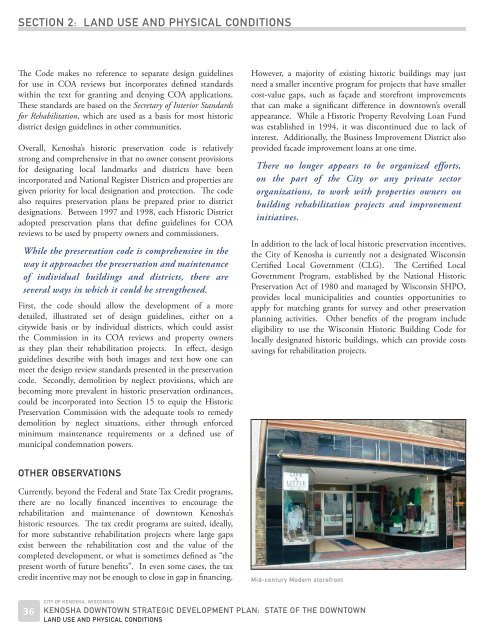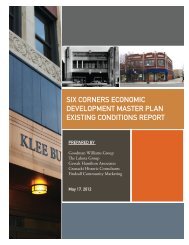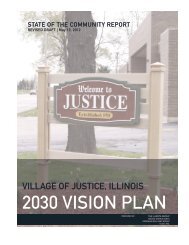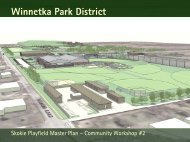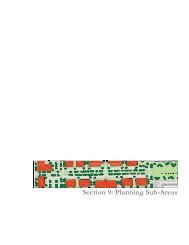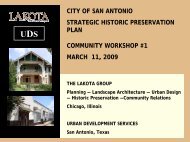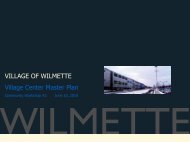Kenosha State of Downtown Report.indd - The Lakota Group
Kenosha State of Downtown Report.indd - The Lakota Group
Kenosha State of Downtown Report.indd - The Lakota Group
Create successful ePaper yourself
Turn your PDF publications into a flip-book with our unique Google optimized e-Paper software.
SECTION 2: LAND USE AND PHYSICAL CONDITIONS<br />
<strong>The</strong> Code makes no reference to separate design guidelines<br />
for use in COA reviews but incorporates defined standards<br />
within the text for granting and denying COA applications.<br />
<strong>The</strong>se standards are based on the Secretary <strong>of</strong> Interior Standards<br />
for Rehabilitation, which are used as a basis for most historic<br />
district design guidelines in other communities.<br />
Overall, <strong>Kenosha</strong>’s historic preservation code is relatively<br />
strong and comprehensive in that no owner consent provisions<br />
for designating local landmarks and districts have been<br />
incorporated and National Register Districts and properties are<br />
given priority for local designation and protection. <strong>The</strong> code<br />
also requires preservation plans be prepared prior to district<br />
designations. Between 1997 and 1998, each Historic District<br />
adopted preservation plans that define guidelines for COA<br />
reviews to be used by property owners and commissioners.<br />
While the preservation code is comprehensive in the<br />
way it approaches the preservation and maintenance<br />
<strong>of</strong> individual buildings and districts, there are<br />
several ways in which it could be strengthened.<br />
First, the code should allow the development <strong>of</strong> a more<br />
detailed, illustrated set <strong>of</strong> design guidelines, either on a<br />
citywide basis or by individual districts, which could assist<br />
the Commission in its COA reviews and property owners<br />
as they plan their rehabilitation projects. In effect, design<br />
guidelines describe with both images and text how one can<br />
meet the design review standards presented in the preservation<br />
code. Secondly, demolition by neglect provisions, which are<br />
becoming more prevalent in historic preservation ordinances,<br />
could be incorporated into Section 15 to equip the Historic<br />
Preservation Commission with the adequate tools to remedy<br />
demolition by neglect situations, either through enforced<br />
minimum maintenance requirements or a defined use <strong>of</strong><br />
municipal condemnation powers.<br />
However, a majority <strong>of</strong> existing historic buildings may just<br />
need a smaller incentive program for projects that have smaller<br />
cost-value gaps, such as façade and storefront improvements<br />
that can make a significant difference in downtown’s overall<br />
appearance. While a Historic Property Revolving Loan Fund<br />
was established in 1994, it was discontinued due to lack <strong>of</strong><br />
interest. Additionally, the Business Improvement District also<br />
provided facade improvement loans at one time.<br />
<strong>The</strong>re no longer appears to be organized efforts,<br />
on the part <strong>of</strong> the City or any private sector<br />
organizations, to work with properties owners on<br />
building rehabilitation projects and improvement<br />
initiatives.<br />
In addition to the lack <strong>of</strong> local historic preservation incentives,<br />
the City <strong>of</strong> <strong>Kenosha</strong> is currently not a designated Wisconsin<br />
Certified Local Government (CLG). <strong>The</strong> Certified Local<br />
Government Program, established by the National Historic<br />
Preservation Act <strong>of</strong> 1980 and managed by Wisconsin SHPO,<br />
provides local municipalities and counties opportunities to<br />
apply for matching grants for survey and other preservation<br />
planning activities. Other benefits <strong>of</strong> the program include<br />
eligibility to use the Wisconsin Historic Building Code for<br />
locally designated historic buildings, which can provide costs<br />
savings for rehabilitation projects.<br />
OTHER OBSERVATIONS<br />
Currently, beyond the Federal and <strong>State</strong> Tax Credit programs,<br />
there are no locally financed incentives to encourage the<br />
rehabilitation and maintenance <strong>of</strong> downtown <strong>Kenosha</strong>’s<br />
historic resources. <strong>The</strong> tax credit programs are suited, ideally,<br />
for more substantive rehabilitation projects where large gaps<br />
exist between the rehabilitation cost and the value <strong>of</strong> the<br />
completed development, or what is sometimes defined as “the<br />
present worth <strong>of</strong> future benefits”. In even some cases, the tax<br />
credit incentive may not be enough to close in gap in financing.<br />
Mid-century Modern storefront<br />
36<br />
CITY OF KENOSHA, WISCONSIN<br />
KENOSHA DOWNTOWN STRATEGIC DEVELOPMENT PLAN: STATE OF THE DOWNTOWN<br />
LAND USE AND PHYSICAL CONDITIONS


